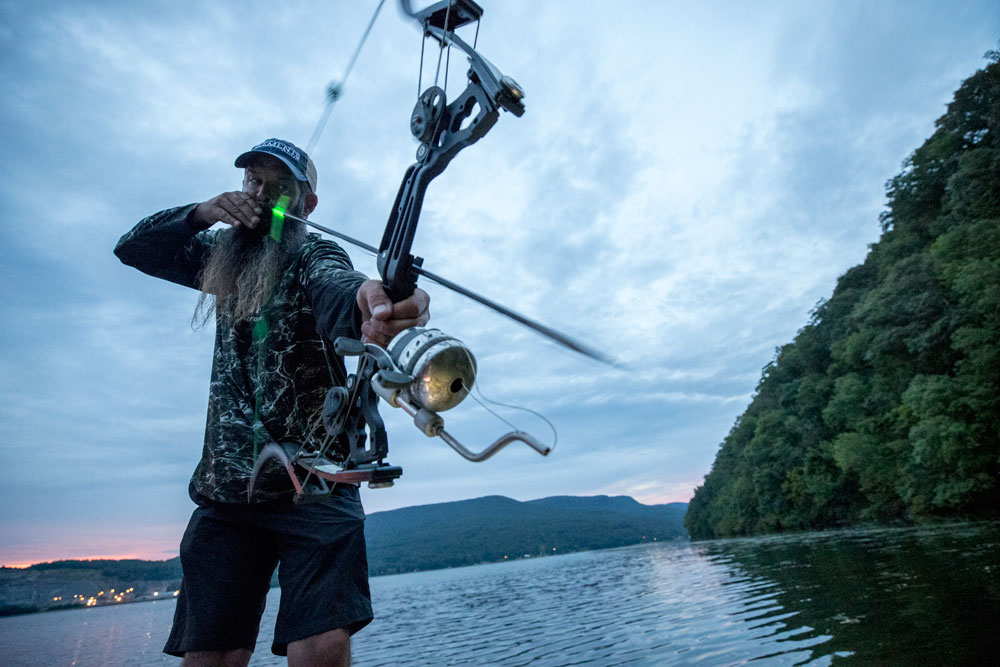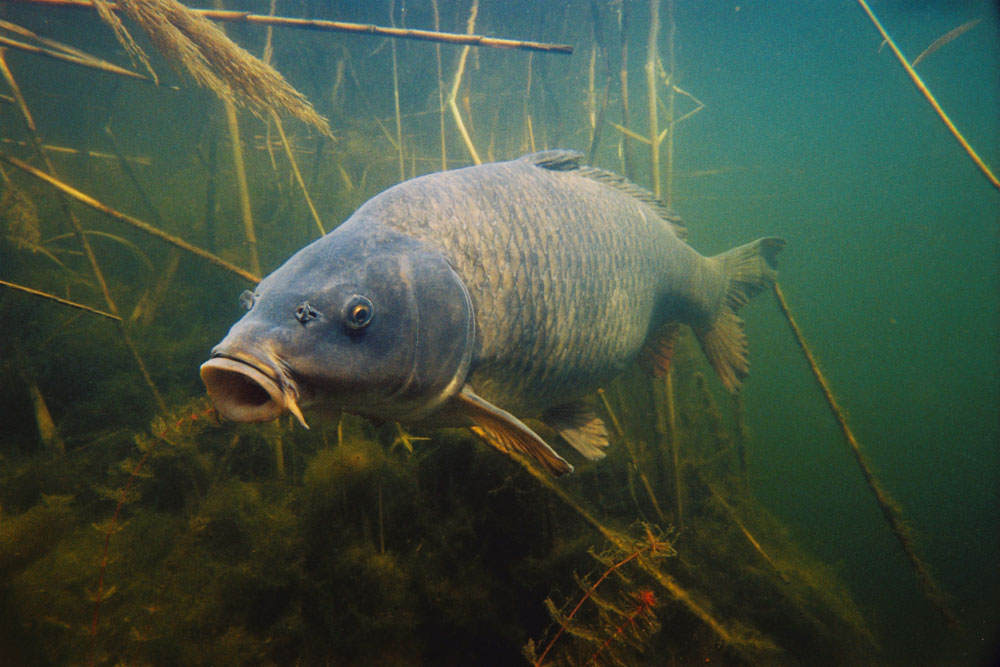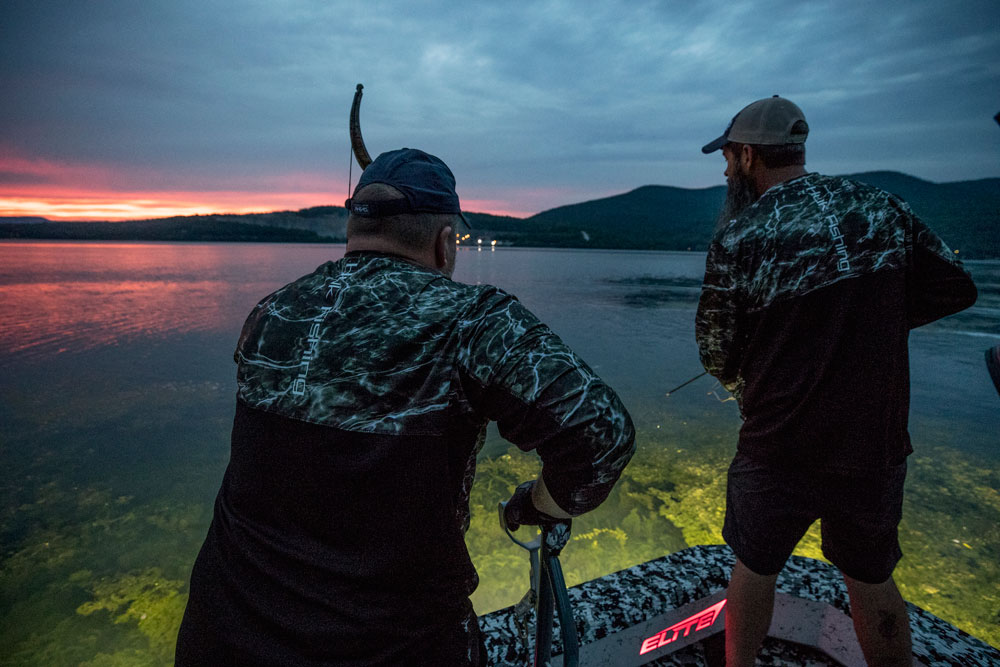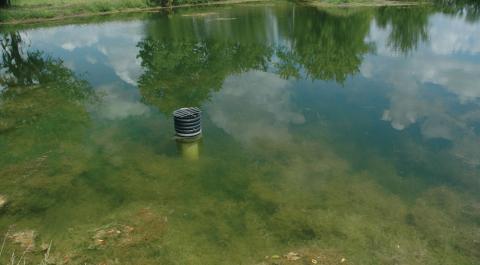Bowfishing for rough fish—those fish not hunted for food or which are undesirable as sport fish—takes skill but not pricey equipment. Some anglers who have never been bowfishing before assume the sport takes a lot of expensive gear, or that you need to have a particular kind of high-tech bow or boat to be able to enjoy the sport. This couldn't be further from the truth; you don't need very much equipment to get out there and enjoy this adrenalin-fueled endeavor.

Where to Bowfish
When you start bowfishing, you want to be on a body of water that you know well. As you're gaining skill and experience in this new sport, pick a lake or river that you're familiar with, especially if you're going out at night.
It's beneficial to know precisely where the shallows are, where the clumps of vegetation grow, and where the fastest currents run. As you gain more skill and experience, you can blend what you know about bowfishing and the body of water on which you're fishing.
For example, when the fish spawn, they usually go up in the grasses and reeds to do so. To take advantage of this springtime ritual, in which the fish are incredibly vulnerable and preoccupied, you have to know where the most viable aquatic vegetation is—like weed beds and grass flats.
Later in the year, when the fish move into a feeding pattern, you'll want to know where to find them when they're feeding, which are places like mudflats. Ask your local guides or tackle shops near the lake to get tips and suggestions about bowfishing for carp and other rough fish.
Since these fish are competition for other types that anglers catch for sport and food, most locals will have no problem telling you where the choicest spots are.

When to Bowfish
One of the great things about bowfishing is that it is an adaptable sport. In terms of both season and time of day, bowfishing adapts to your expectations. Anglers catch the huge ones if they go shooting when the more massive carp are most active—daytime and evening in summer and late summer.
If you prefer night-fishing, you can bowfish at night pretty much all year long, although you might have better luck in the spring, close to the spawn. For daytime bowfishing, however, you should stick to spring spawn for the most success.
Most bow fishers contest that the best time of year to fish for carp with a bow is the spawn. The fish are visible, up in the reedy shallows, and they are completely distracted.
How to Aim
Bowfishing is done without the use of sights to help you aim. Instead, you rely on instinctive muscle memory that develops with experience to help you learn how to aim when bowfishing.
The great thing about bowfishing is that it allows accuracy by volume. If you can find a boat and bow and get out onto the water, you'll have many shooting opportunities. There is some finesse to it, though. Bowfishers have to judge the distance from the fish, the light refraction, and the fish's depth.
Ideally, you want to be 10-15 feet away from your prey when you shoot and aim at roughly six inches below the fish to make up for the water's refraction. If you're aiming at a big fish, aim at its belly.
A bow fisher's word of advice? "Always aim low." Once you get out there and start taking shots, instinct will take over, and you'll begin hitting fish.
Bowfish Equipment
Your bow doesn't need to be top of the line at the outset. The keyword for bowfishing equipment is comfort. You want to get as comfortable as you can on the water with a bow in hand. An old hunting bow or target bow that is easy for you to shoot is the best bet for bowfishing success.
Next, you need a reel. Most bows include a stabilizer hole in the middle, and a reel will mount snugly in this hole. When you shoot, make sure you've flipped the bail to let the line release.
You'll need an arrow rest, but the standard hunting drop-away rest that many have on their compound bows is not going to work for bowfishing. For bowfishing, you need a fixed rest that's stationary.
The arrow rest will hold the arrow tight to the bow and allow it to shoot through. You can use the shelf on the bow as an alternative but, if you're excited or move around due to the unsteadiness of a boat, you're liable to knock your arrow away.
The last element you need to go bowfishing is a specific arrow made for the sport. Bowfishing arrows may look like any other hunting arrow without the fletching, but they're not. These arrows are entirely made out of carbon or fiberglass to make them extremely durable. They have a little flex, but they spring right into their straight shape when released—a necessity when shooting into the reeds for a large, muscular carp.
The arrowheads on bowfishing arrows have barbs, which most states will require, to make sure that you get your fish back in after you shoot them. They're quick release, so, once you shoot the fish, they'll deploy, and you can bring the fish to your boat.
These three elements—bow, reel, and arrow—are all you need to start the sport of bowfishing ... and maybe a buddy with a boat.

Final Thoughts
Bowfishing is an inexpensive and rewarding sport to try, and it offers many benefits for both anglers and hunters beyond a fish dinner. You simply need a boat that you're comfortable shooting from, a bow, and a body of water you know fairly well. It's as simple as that.



























